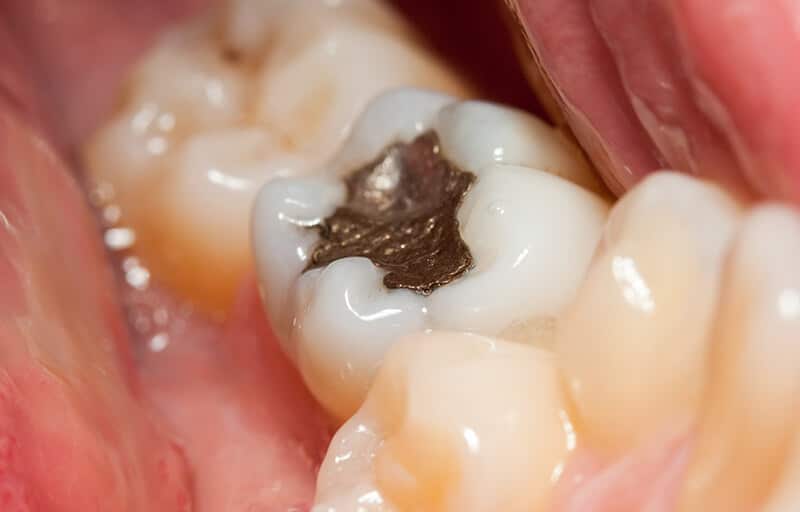Dental inlays and onlays (overlays) are a less-common dental restoration that falls somewhere between a traditional filling and a lab made, full coverage dental crown.
Some people find that it’s more appropriate to call them “three-quarter crowns” or “lab made fillings.”
The Purpose of Onlays / Overlays
Technically, a dental onlay goes over the tooth to repair and rebuild the cusp portions (pointed edges on the chewing surfaces of the teeth) that have either worn down, fractured off, or broken due to decay. It lays over the tooth, rather than inside of it (although it’s important to note, a portion of the onlay does go inside of the tooth, it does more to restore the outer shape than its counterpart, an “inlay.”)
Not Quite a Crown, but More Than a Filling
With a dental crown, the restoration covers the entire tooth. It “caps” the remaining tooth structure, regardless of how much is still left intact before the treatment is started. On the other hand, a filling simply patches up the hole inside of a tooth, rather than cover the outside.
Overlays (onlays) offer a middle-of-the-road approach to repairing the damaged area, without covering the entire tooth. It is essentially a partial crown that bonds over the damaged area to rebuild it without sacrificing the risk of stability during everyday wear.
An onlay is just large enough that it has enough integrity to bite and chew with, yet it maximizes the ability to preserve natural, healthy enamel instead of covering otherwise in-tact tooth structure. Hence the nickname, three-quarter crown.
Although a filling wouldn’t be appropriate to repair a damaged tooth cusp (it would simply fall off after pressure is applied when biting/chewing) a crown is often too overzealous for repairing teeth that would be otherwise fine if it were not for the fractured cusp. As such, dentists have developed dental overlays for these instances.
Why Onlays are Made in a Lab
Onlays have to be handmade in a dental lab or using 3D milling equipment in the dental office, just like a crown would. Because it’s not shaped directly to the tooth like a filling, the durable porcelain or zirconia restoration must be carved or poured layer-by-layer by an expert ceramist. The process is very similar to having a crown made; the only difference is that it is a different shape.
Unless the onlay is made using CAD/CAM milling equipment in the dental office, the design process will take two appointments instead of one. In most cases, the visits will be about 10-14 days apart, allowing adequate time for the mold of the tooth to be sent to a lab, the overlay created, and then delivered back to the dentist’s office. Same day technology would eliminate the back-and-forth process and carve a restoration while the dentist and patient wait.
Advantages of Choosing a Dental Overlay
The biggest benefit of having an onlay made is the opportunity to preserve intact, healthy enamel while still repairing the tooth. Because a filling isn’t appropriate for broken cusps, most people (and dentists) progress to the next most common treatment of placing a crown. But with a crown, the entire tooth — including the healthy portions — must be shaved down to the point that a cap can fit over it. This means compromising strong, healthy teeth.
By finding a dentist that offers overlays/onlays, you can minimize the structural changes to your teeth for a less invasive restoration. This more holistic approach works to extend the integrity and life of the tooth as it is, rather than potentially shorten its overall life expectancy.
When an onlay — like any other type of restoration — gradually wears out and needs to be replaced, there is an option to have a new overlay made or to then finally get a crown. But once a crown needs to be changed out, the only option is a new crown, and additional re-prepping of the tooth underneath. Choosing to start with the more aggressive treatment from the very beginning can weaken the tooth and potentially shorten its overall lifespan.
Talk with a Dentist to Get an Opinion
Not all dentists offer dental overlays. The best option is to find one who advertises onlays on their website, or to locate a practice that offers same day treatments, such as CEREC.
With a Aetna dental savings plan, you can save 15-50% on dental care without insurance. Contact one of the discount specialists at Aetna Dental Offers to find out more.
